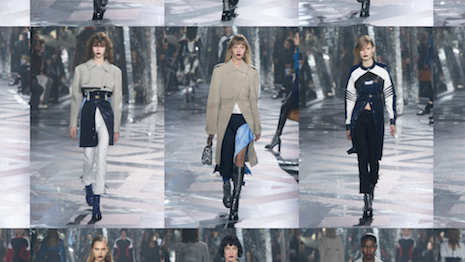Franchising, retail, business

26/10/2016
The Hermès Birkin bag never goes on sale. Neither does any product from Louis Vuitton, Tiffany or Apple, the latter of which only runs academic discounts and a Black Friday sale. These brands also share control of their entire value chain, eliminating the retail middleman.
If you see Louis Vuitton at an upscale department store, that is because it leases the space, not because it does wholesale.
In the customer-centric digital world, luxury brands can collect and analyze data on their audience’s purchasing behavior and social chatter around luxury items. They can then fine-tune and test and optimize their inventory strategy, making overstocking and sales as avoidable as they are undesirable.
This customer-centric, data-driven strategy is still rare among luxury brands, a fact made even more puzzling knowing that their equity revolves around selling Veblen goods.
A luxury item is a Veblen good. In the inverted economic logic, the more something costs, the more demand and sales it will generate due to perception of superior quality, exclusivity and unattainability.
Red signal
Luxury brands have increased prices of their items by 60 percent over the last decade, according to the Bureau of Labor Statistics.
Hermès Kelly bag used to cost $4,800 in 2003. Today, this price is $7,600.
Burberry keeps making its trench coats progressively more expensive to spur desire among the more affluent consumers.
Reducing luxury prices signals lack of desirability. It also signals lower quality, lack of exclusivity and scarcity. It makes luxury goods attainable.
Yet, lowering prices on luxury items has become a go-to marketing strategy for high-end retailers.
Barneys New York’s end-of-season sale offered a whopping 70 percent markdown.
Market-driven price reductions such as holiday promotions, competitive pressures and fight for market share trained consumers to expect sales to the point they nearly refuse to pay full price for anything.
This vicious cycle of customer expectations and brand offerings is the unfortunate side effect of the old-fashioned retail system.
Luxury consumers, presented with products before those have even been made had to wait six months for items to hit stores. By that time, they were willing to wait a few months more and get them on sale.
In the lag-behind, off-season, overcrowded luxury landscape, waiting for sale became the easiest customer decision-making tactic.
The direct-to-consumer retail model now comes to the rescue.
Model turn
In this model, runway shows take place at the end of the production process and not prior to it, items are available immediately after they are shown, and luxury products displayed at the runway are in-season.
Faced with new and seasonal items, luxury connoisseurs are ready to pay any price to have them right now.
Street-style bloggers, social media and traditional press all work in favor of this instant gratification by grooming consumer demand and surrounding consumers with must-have-immediately outfits.
As the industry moves from the promise-now, deliver-later to deliver-now, promise-later model, management of luxury inventory needs to follow the trend.
When it comes to their inventory, luxury retailers should do what they do best: keep seducing their customers. In this, waitlists work better than sales alerts. Limited inventory works better than overstock. “Sold out” works better than “70 percent off.”
THE FUTURE OF luxury retail is data-driven product offerings fine-tuned and optimized by the test-and-learn approach.
Strategy that revolves around data-based personal communication, tiered VIP programs and small welcome discounts, combined with an occasional private, invite-only sample sale both preserves luxury brand equity and is aligned with modern luxury consumer behavior.
As more luxury retailers embrace data and testing, we can look forward to never again hearing the brag, “Oh, those Jimmy Choo shoes? I got them for 70 percent off!”
More importantly, we can look forward to bonfires of unsold merchandise, industrial-size clothes shredders and oversaturated landfills becoming a thing of the past.
Fonte:https://www.luxurydaily.com/can-luxury-brands-avoid-deep-discounts-this-holiday-season/